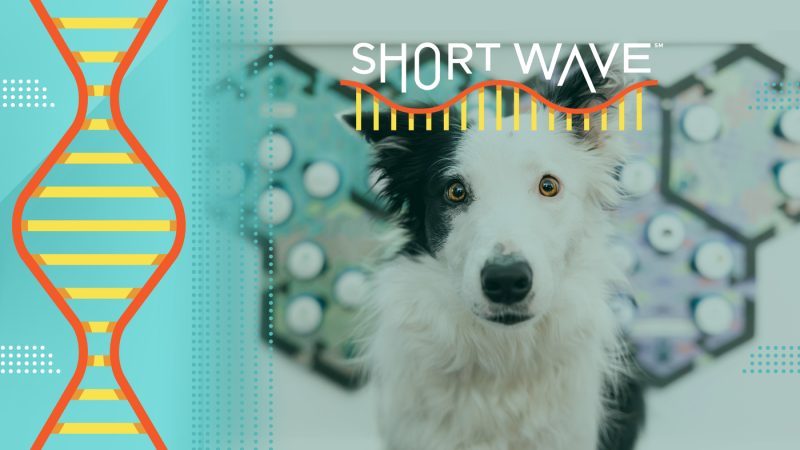Do dogs on TikTok actually understand words on soundboards? : Short Wave : NPR


Bunny is a dog is famous for seeming to communicate with her owner through buttons on a soundboard on the ground. When pushed, the buttons say words like “outside,” “play” and “ouch.”
Bunny has this famous video where she pushes the button for “ouch” then the owner asks, “Where’s your ouch?” After hitting a couple other buttons, Bunny eventually pushes the button for “paw.”
There does happen to be a piece of wood in her paw that was causing her pain.
This kind of interaction seems like it could be true communication — but before scientists can answer that question, they have to take a step back and answer another question first: Can the dogs even understand the words they hear as each button is pressed?
A study recently published in the journal PLOS One answers just that.
“Comprehension should come before production,” says Federico Rossano, a cognitive scientist at the University of California, San Diego and the lead author of the paper. “It’s the same with kids: First, they understand what you mean by ball and milk; and then, they ask for it.”
This initial, small study of about 60 dogs found that, yes, dogs seem to understand words like “play” and “outside” — regardless of whether those words are spoken by their owner or triggered by a button.
Importantly, the dogs did not have any context clues — like humans’ body language or props — as they were tested and processed the words even if their owner wasn’t present.
“The fact that they can understand any language at all is incredible to me. It’s like a testament to their attention, capacity and flexibility as as cognitive creatures because they don’t have anything like that in their natural system,” says Alexandra Horowitz, a professor of animal cognition at Barnard College. Horowitz did not work on the study.
But what about the idea that Bunny and other animals are actively communicating back to their owners through buttons? Are they really able to speak back?
Rossano and his team are tackling that question next.
Now that they’ve proven the pets can understand the words they’re hearing in the first place, the researchers are working on a massive community science project. It includes roughly ten thousand dogs and seven hundred cats — plus, some horses, goats and pigs.
One can only hope that this line of research may one day get us closer to answering the question: Do our pets want to converse with us or are they only ever using us as a vending machine?
Or, if you’re like Horowitz, you’re curious about future research into how dogs communicate through smells, not words.
You can sign up to participate in the larger study testing whether animals are intentionally communicating back to humans at the UCSD comparative cognition lab’s website.
Have other viral headlines that you want us to put to the test for its scientific truth? Email us at shortwave@npr.org — we might cover it on a future episode!
Listen to every episode of Short Wave sponsor-free and support our work at NPR by signing up for Short Wave+ at plus.npr.org/shortwave.
Listen to Short Wave on Spotify and Apple Podcasts.
This episode was produced by Jason Fuller and Jessica Yung. It was edited by Rebecca Ramirez and Brent Baughman. Tyler Jones checked the facts.










